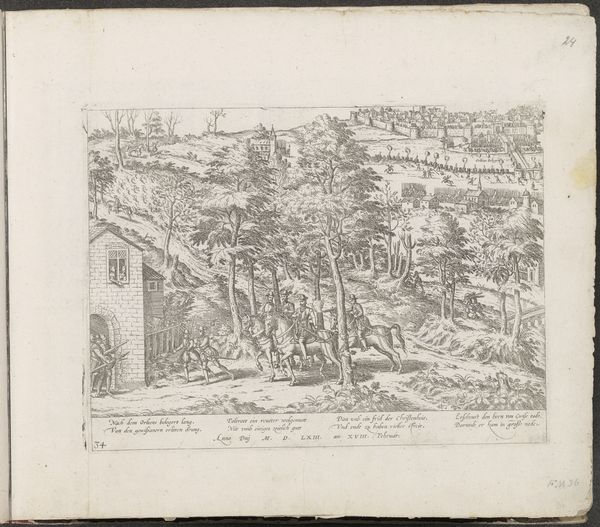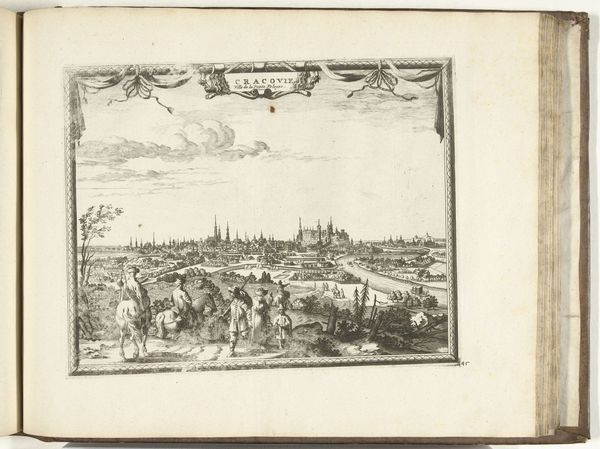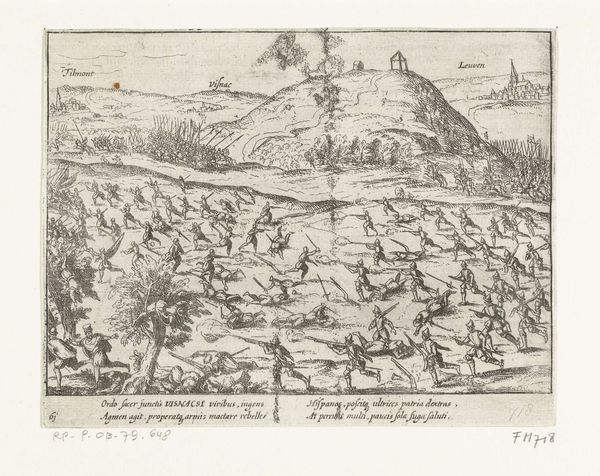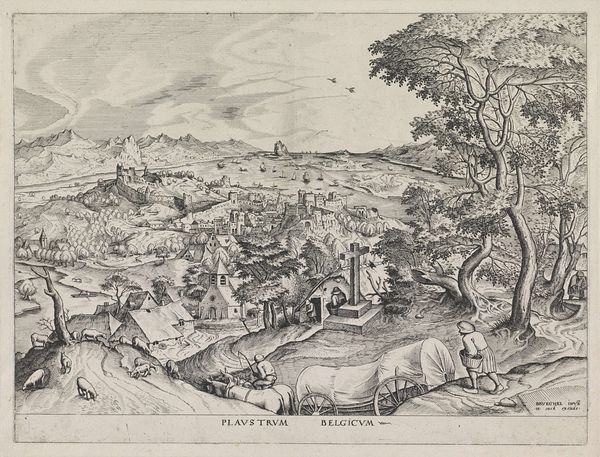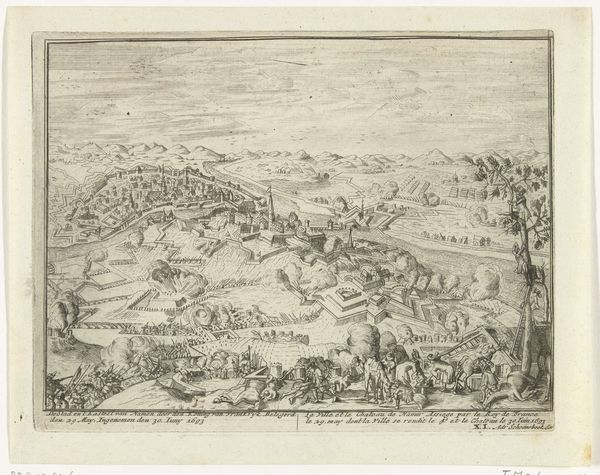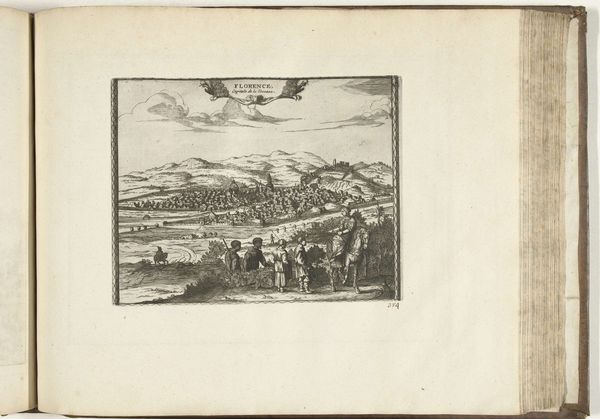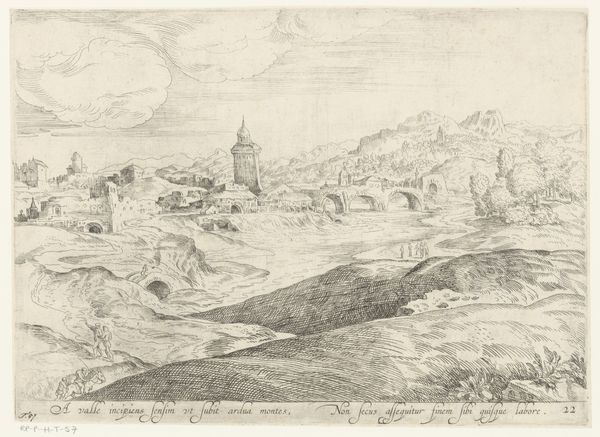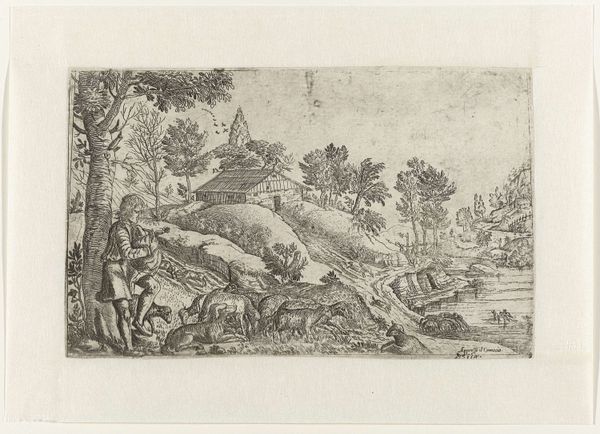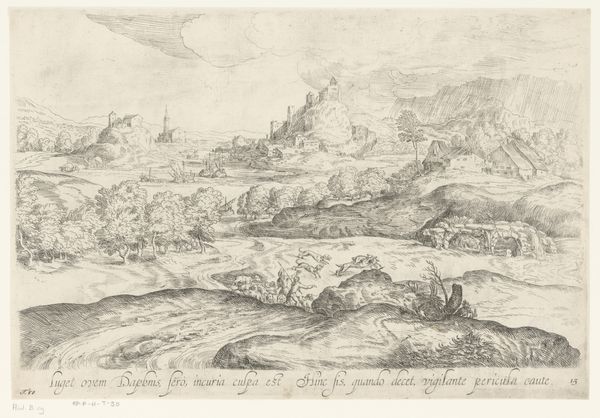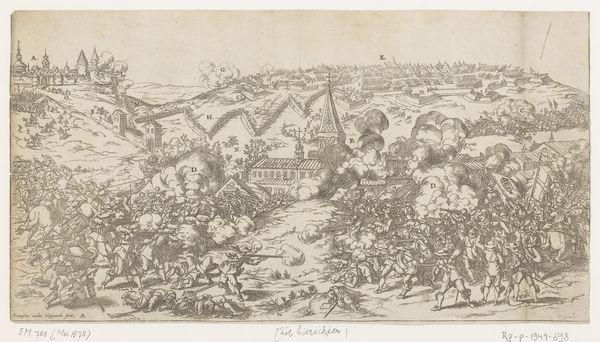
print, etching, engraving
#
narrative-art
#
baroque
# print
#
pen sketch
#
etching
#
old engraving style
#
landscape
#
cityscape
#
history-painting
#
engraving
Dimensions: height 155 mm, width 196 mm
Copyright: Rijks Museum: Open Domain
Curator: This print from 1691, made by Pieter Pickaert, depicts "Sligo door koning Jacobus veroverd, 1690"—The Capture of Sligo by King James. What is your immediate impression? Editor: Chaotic. An immense amount of detail, but all channeled into conveying turmoil. Note the dense layering of figures and the use of line to create textures—it is viscerally overwhelming. Curator: Indeed. This work speaks to a critical historical moment, King James's campaign in Ireland. Prints such as this weren’t simply documentation; they served as propaganda, shaping public perception of events. Consider how Pickaert visualizes power, portraying James as a triumphant, divinely appointed leader. Editor: Observe how the artist utilizes linear perspective to direct the viewer's gaze, moving from the carnage in the foreground to the calm cityscape on the horizon, as a kind of implied destiny. The rendering of smoke and fire adds to the theatrical quality. Curator: Precisely. The baroque style elevates a military engagement into something allegorical, echoing themes of duty, destiny, and even divine will. The image was widely disseminated; its importance cannot be overstated when looking at Anglo-Irish relations in the late 17th century. Editor: It’s a potent combination. Notice too, how the city is represented as somewhat idyllic and neatly organized in contrast with the disarray of war happening upfront, furthering the distinction. Curator: That distinction is really vital. The organization of space serves a clear ideological goal. Editor: I concur, it provides another entry point for deconstructing how this piece acted within—and on—the sociopolitical context of the time. A stunning etching really. Curator: An etching which I find successfully brings to life the events of that period through the perspective of the printmakers.
Comments
No comments
Be the first to comment and join the conversation on the ultimate creative platform.
